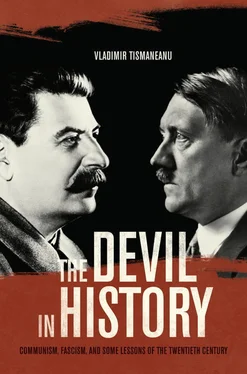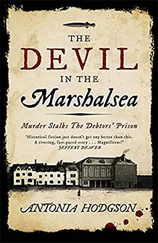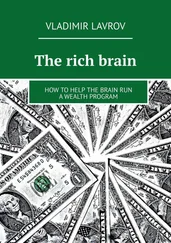The outcome of the new founding myth of Stalin’s Soviet Union had an ominous impact upon the memory and role of the Jews in the new polity: “The murder of the Jews was not only an undesirable memory in and of itself; it called forth other undesirable memories. It had to be forgotten.” 76Under the circumstances, the Soviet Jews rapidly became enemies “masquerading in the guise of Soviet people.” 77
Chief ideologue Andrei Zhdanov played a major role in the campaign, including the notorious Central Committee resolutions regarding literary journals, philosophy, and music. Initially a supporter of the formation of the State of Israel, Stalin developed strong misgivings regarding the presumed “divided loyalty” of Soviet Jewish citizens to their homeland. Members of the Jewish Anti-Fascist Committee (a Soviet propaganda arm during the war) were arrested under hallucinating charges of conspiracy to disband the Soviet Union and to create “a Jewish state in Crimea.” Among the victims of this anti-Semitic witch hunt were major Yiddish language poets (among them Peretz Markisch and David Bergelson), Old Bolshevik intellectuals, a former member of the Central Committee and deputy minister of foreign affairs, Solomon Lozovsky, and academician Lina Shtern, a prominent physician who had come to the USSR as a political refugee from Nazi Germany. The defendants, including Lozovsky, refused to confess. With several exceptions recruited among secret political police informers, they were sentenced to death and executed in the summer of 1952 (Lina Shtern was the exception, probably because of her prestige among German Communists). 78
Stalin’s final paranoia consisted in the designation of Jews—i n the USSR as well as in East Central Europe—as the new “enemies of the people,” as treacherously villainous as the Trotskyists in the 1930s. No one was spared suspicion: even the most loyal Communists could be spies and renegades, double-dealers and wreckers, especially those who might nourish hidden Zionist propensities. This Judeophobic cosmology included real and imagined Zionists but no real enemy of the Soviet Union. During the last month of Stalin’s life, the anti-Semitic campaign reached its climax with thousands of layoffs of Jews in major Soviet institutions and the arrest of Kremlin doctors, mostly Jewish, who were accused of having poisoned or deliberately applied wrong treatments to such Stalinist luminaries as Andrei Zhdanov, Aleksander Scherbakov, and Marshall Ivan Konev. 79The propaganda department was instructed to obtain public endorsements from highly recognized Jewish personalities in support of imminent decisions to punish those suspected of disloyalty and treason. Among those approached by Central Committee emissaries were writer Ilya Ehrenburg and historian Isaac Mints, a member of the Soviet Academy of Science. Although a flamboyant supporter of Stalinist peace campaigns, the former refused to sign a letter meant to be published in the party daily, Pravda. 80The latter did it, probably after heartbreaking agony:
Mints’s daughter said that her father was deeply frightened and troubled by the accusations against him, and news of the Doctor’s Plot only exacerbated his fears. She still remembers how pale he was when, after Stalin’s death, he brought her the newspaper announcing that the so-called plot had been a fabrication. He spoke not a word, just showed her the headline. But Mints may also have felt that he was acting within the prescribed norms of Bolshevik academic culture. Mints could accept his public denunciation and participate in an obvious fabrication of Jewish sentiments because these were part of a cultural process and lexicon that he knew well. It was part of the standard public ritual that one had to go through to be a Bolshevik and to show one’s commitment and loyalty. 81
While the specter of a massive pogrom loomed over the Soviet Jewish population, in the people’s democracies, the struggle against “rootless cosmopolitanism” allowed certain local leaders to engage in an elite purge against the “Muscovite” factions dominated by Communists of Jewish extraction (many of whom had fled Fascism and had sought refuge in the Soviet Union between the two wars). 82The elimination of those otherwise totally loyal Stalinists reached a spectacular level in Czechoslovakia, where the chief defendant was Rudolf Slánský, who until September 1951 had been the general secretary of the ruling Communist Party and in that capacity had presided over the ruthless persecution of Communists and non-Communists. Since the trial had to confirm Stalin’s conviction about the existence of a worldwide conspiracy threatening the Communist bloc, there was no way to exonerate any of the defendants. Furthermore, the anti-Semitic charges were bound to appeal to pro-Communist chauvinistic prejudices in the whole region. The numerous instances of anti-Semitism under so-called state socialism cannot be simply disregarded as aberrations. As Vassily Grossman rightly pointed out, since under totalitarian regimes there is no civil society, “there can only be state anti-Semitism.” 83Under Communism, the Jews became a target of policies of exclusion, isolation, and punishment on the basis of their ethnicity, were deemed potentially disloyal (“enemies of the people”) and inherently bourgeois (“class enemies”). Jewish identity turned at times under Communism into an innate, invariable, and even hereditary source of otherness that called for state-engineered excision.
In addition, postwar Stalinist anti-Semitism forced Jewish Communists to persevere in the denial of their own identity. Very few maintained their Jewish names (Ana Pauker, Jakub Berman), while most adopted names attuned to ethnic majorities (Mátyás Rákosi, Roman Zambrowski, Leonte Răutu). Generally speaking, Jewish Communists abjured their background, proudly severed all links with their ancestors’ traditions, and engaged in vitriolic attacks on “Jewish bourgeois nationalism.” They were, to use Isaac Deutscher’s term, “non-Jewish Jews.” After 1945, though, “Jewish Stalinists… were caught between Stalinist anti-Semitism in Moscow and popular anti-Semitism in their own country.” For example, Timothy Snyder remarks that in Poland “Jewish communists had to stress that their political identification with the Polish nation was so strong that it erased their Jewish origins and removed any possibility of distinct Jewish policies.” 84Under the circumstances, Stalinist anti-Semitism was both criminal and conducive to an entire community’s erasure from the recognized grand narratives of the postwar order under Communism.
A direct consequence of the Slánský events in Czechoslovakia was the purge trial of Paul Merker, a member of the Central Committee of the Socialist Unity Party (SED) since 1946. His initial downfall came about because of his relationship during the Second World War with Noel Field and Otto Katz (part of the group tried and executed in Prague in 1951). However, the crux of the accusations against Merker concerned his opinions and positions on the Jewish question in post-194 5 Germany. In 1952, the SED’s Central Party Control Commission produced a document that detailed Merker’s errors. Unsurprisingly, it was entitled “Lessons of the Trial against the Slánský Conspiracy Centre.” The commission insisted that Merker was involved in “the criminal activity of Zionist organizations,” which, allied with “American agents,” aimed to destroy the “people’s democracies” in Eastern Europe. Additionally, it claimed that Merker tried “winning over SED comrades of Jewish descent.” 85During interrogation (both by the Stasi and the People’s Commissariat for Internal Affairs), Merker was stamped as a Judenknecht (“servant of the Jews”). In an interesting twist, even after the 1954 resolution of the Noel Field case, Merker was not released. On the contrary, now his whole trial was focused on his alleged collaboration with Jewish capitalist and cosmopolitan circles. He was sentenced in 1955 to eight years in prison but was released in 1956 without ever being fully rehabilitated. Nevertheless, Merker and his spouse never attempted to flee to West Germany. Taking an exemplarily Rubashov-like approach, Merker stated, “In the trial against me, I did without a defense lawyer in order to help keep the proceedings absolutely secret.” Again, the (il) logic of Stalinism was at work: “He had made efforts to prevent ‘enemies of the DDR’ from using his case, and he and his wife had been and would remain silent about the case.” 86His trial, sentence, and interrogation minutes were indeed kept secret, emerging only after the fall of the Berlin Wall.
Читать дальше












